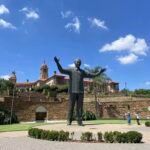
Bahrain
Bahrain, a small but wealthy island nation in the Middle East, is officially known as the Kingdom of Bahrain. It is the largest island in the Persian Gulf and, at the same time, the smallest country in the region. With a total area of less than 800 square kilometers, about 200 of which have been reclaimed from the sea, Bahrain is still expanding. The population is relatively small, with a large proportion of residents being expatriates, and many more are waiting to join the growing community.
Bahrain’s name is not widely recognized, and few people are familiar with its history. It is often known as one of the Gulf Cooperation Council (GCC) countries, a “little brother” to Saudi Arabia, sharing a reputation for sudden wealth based on oil. However, the era of reliance on oil is long gone. Though oil once sustained Bahrain, its reserves are nearly depleted, and the country has shifted to finance, becoming a tax haven.
Bahrain’s close relationship with Saudi Arabia remains significant. The only land connection Bahrain has is the King Fahd Causeway, which links the island to Saudi Arabia. During the Arab Spring in 2011, Bahrain’s monarchy faced a serious challenge. Saudi Arabia intervened militarily, ignoring global pressure, to suppress the unrest and restore stability. Since then, Bahrain has closely followed Saudi Arabia in political, economic, cultural, and defense policies, relying heavily on its larger neighbor for support and security.
Despite its small size, Bahrain has a rich history. As an important island and port in the Persian Gulf, it has held strategic significance for thousands of years. Archaeological evidence suggests that Sumerians settled here around 3000 BCE, and the Phoenicians established trading posts around 1000 BCE. The civilization that emerged from this region, known as Dilmun, played a significant role in the development of ancient Middle Eastern culture.
From the 6th century CE, Bahrain was ruled by both the Persian and Arab empires, leading to the complete Arabization of society. The island was later occupied by Portugal, Iran, and Britain during the 16th and 17th centuries. British influence, in particular, shaped much of modern Bahrain’s development. Though Bahrain gained independence in 1971, it retained many British administrative practices before transitioning to a monarchy in the 21st century.
In many ways, British influence rewrote Bahrain’s modern history. The political and economic structures that exist today were largely designed by the British. During the colonial period, Bahrain was part of Britain’s Persian Gulf protectorates, alongside eight other emirates. When Britain withdrew, Bahrain and Qatar became independent states, while the remaining seven emirates formed the United Arab Emirates (UAE). Bahrain’s independence was primarily intended to ensure continued British control over its oil resources. In fact, Bahrain was the first Gulf state to develop oil under British rule, and it remained an essential oil hub for Britain until its independence. However, by the time Bahrain regained control over its oil industry, most of its reserves were nearly exhausted.
Fortunately, Bahrain began preparing for economic diversification early on. From the 2000s, the country shifted its focus from oil production to oil refining and petrochemical industries, while also expanding into manufacturing, trade, real estate, and tourism. Bahrain’s economy remained stable by opening to foreign investment and establishing itself as a regional hub for financial services. In 2010, Bahrain launched an ambitious drive toward economic diversification, developing financial ports, expanding banking services, and emerging as a financial center for the Gulf region and the Middle East. This transformation into a tax haven led the European Union to blacklist Bahrain in 2017 as a tax-avoidance jurisdiction. Bahrain thus became the first Gulf state to pioneer both the oil economy and the post-oil transition.
Bahrain is not limited to a single island; it comprises 36 islands of varying sizes. However, territorial disputes with Qatar have long complicated relations between the two countries. One contested island led to a breakdown in diplomatic ties, and the two nations remain disconnected to this day. This ongoing tension has blocked all sea, air, and land travel between them.
Initially, I planned to visit Bahrain after my trip to Qatar, given the proximity. The ferry ride across the Gulf would have taken just over an hour, while driving via Saudi Arabia and the King Fahd Causeway would have taken about four hours. A flight would have been even quicker. However, due to the severed ties between Qatar and Bahrain, I had to find an alternative route through a third country. I originally considered traveling via Kuwait, but eventually decided on Lebanon. From Beirut, I took a direct flight to Bahrain’s capital, Manama.
Car Rental and Itinerary
Before departure, I researched Bahrain and found that it doesn’t have many attractions, with only a few notable highlights. Some people summarize Bahrain’s main sights as: a tree (the Tree of Life), a well (the first oil well), a bridge (the King Fahd Causeway connecting Saudi Arabia), a fort (Bahrain Fort), a mosque (Al-Fateh Grand Mosque in Manama), and a racetrack (the Bahrain International Circuit, home of the F1 Grand Prix). Indeed, Bahrain’s attractions are relatively limited, with most concentrated in the capital, Manama.
With this in mind, we based ourselves in Manama, using it as a central hub for day trips to explore the entire island. As a former oil-producing region turned financial hub, Bahrain enjoys a strong economy, and prices are accordingly high. The Bahraini dinar is one of the world’s most valuable currencies, ranked second globally. To save time, reduce costs, and maximize convenience, we opted for self-driving throughout our six-day stay.
6-Day Itinerary
Day 1:
- Manama city center
- Amwaj Islands
- Arad Fort
Day 2:
- Muharraq Souq
- Muharraq Cultural Exchange Center
- Traditional houses of Muharraq
Day 3:
- Bahrain National Museum
- Al-Fateh Grand Mosque (Manama Grand Mosque)
- Bahrain Financial Harbour
- Bahrain Gate
- Manama Souq
- Pearling History Museum
Day 4:
- Bahrain Fort (Qal’at al-Bahrain)
- Barbar Temple
- Khamis Mosque
- Saar Burial Mounds
- Military Museum
- Riffa Fort
- Sakhir Palace
Day 5:
- King Fahd Causeway
- Bahrain International Circuit
- The first oil well
- Tree of Life
Day 6:
- Al Dar Islands
Manama – The Pearl of the Persian Gulf
Manama was undoubtedly the highlight of our trip to Bahrain. Although Bahrain International Airport is located on Muharraq Island, it’s only a short distance from the city center of Manama—after all, Bahrain is a small island nation. The proximity made it easy to explore the city in one glance.
From the moment we arrived, Manama felt similar to other Gulf cities, with endless blue skies, clear waters, and picturesque coastlines. Close by, white sails dotted the beautiful harbor, while towering skyscrapers pierced the horizon in the distance. Truly a seaside city, Manama’s skyline viewed from the coast is stunning, a blend of natural beauty and modern splendor.
The city is connected by well-maintained tree-lined boulevards and elevated highways, which smoothly led us into the heart of the city. Although Bahrain as a whole is small, its capital, Manama, felt quite expansive. As the political, economic, cultural, transportation, and tourism hub of the country, Manama also serves as a regional financial center and a key port, earning the title “Pearl of the Persian Gulf.”
Beyond its towering skyscrapers, Manama boasts a variety of culturally significant landmarks, including museums, theaters, and the renowned Al-Fateh Grand Mosque, one of the largest in the Gulf region and a prominent site in the Arab world.
Manama also stands out for its diversity and inclusiveness. On one hand, the Manama Souq preserves the charm of history and national heritage, while on the other, the Financial Harbour radiates with modern energy. The city seamlessly blends the deep traditions of Arab culture with the vibrant colors and lively atmosphere of South Asian influences, making it a uniquely captivating destination.


Al-Fateh Grand Mosque, the symbol of Manama
The most representative landmark of Manama is likely the Al-Fateh Grand Mosque, named after Bahrain’s founder, Ahmed Al-Fateh. Although it is not a historical relic, it is a modern building that best reflects Bahrain’s religious culture. Built in 1988, the mosque is vast and impressive, with the main structure covering 6,500 square meters and capable of accommodating 7,000 worshippers at the same time, making it one of the largest mosques in the world.
The mosque’s exterior is grand, and its interior equally magnificent. The spacious prayer hall is centered beneath one of the world’s largest fiberglass domes, weighing 60,000 kilograms. The decorations are simple; there are only geometric patterns on the walls and floors, with no depictions of people, animals, or plants, reflecting Islamic teachings prohibiting idol worship. However, the materials used are of the highest quality: the floors are inlaid with Italian marble, the central carpets are Irish wool, chandeliers are from France, the doors are made from Indian wood, and the stained-glass windows are from Iran. The mosque embodies simplicity with elegance, revealing sophistication in its modesty.
The mosque is open to visitors free of charge, with guided tours provided. However, the tours often include elements of religious outreach. The Ministry of Islamic Affairs is also located within the mosque.
Isa Cultural Centre, Bahrain’s White House
Adjacent to the Al-Fateh Grand Mosque is the Isa Cultural Centre. This building combines elements of Western and Arab architectural styles. Due to its entirely white exterior, it is colloquially known as the “Bahrain White House.” The Manama Public Library is also housed within the centre.


Bahrain’s Window to the Nation – Bahrain National Museum
The Bahrain National Museum is located along the seafront in the heart of Manama. It is the largest and oldest museum in Bahrain, showcasing paintings, sculptures, illuminated Qur’ans, and exhibits that depict the country’s history, culture, and traditions, spanning from the prehistoric Stone Age to the modern oil era.
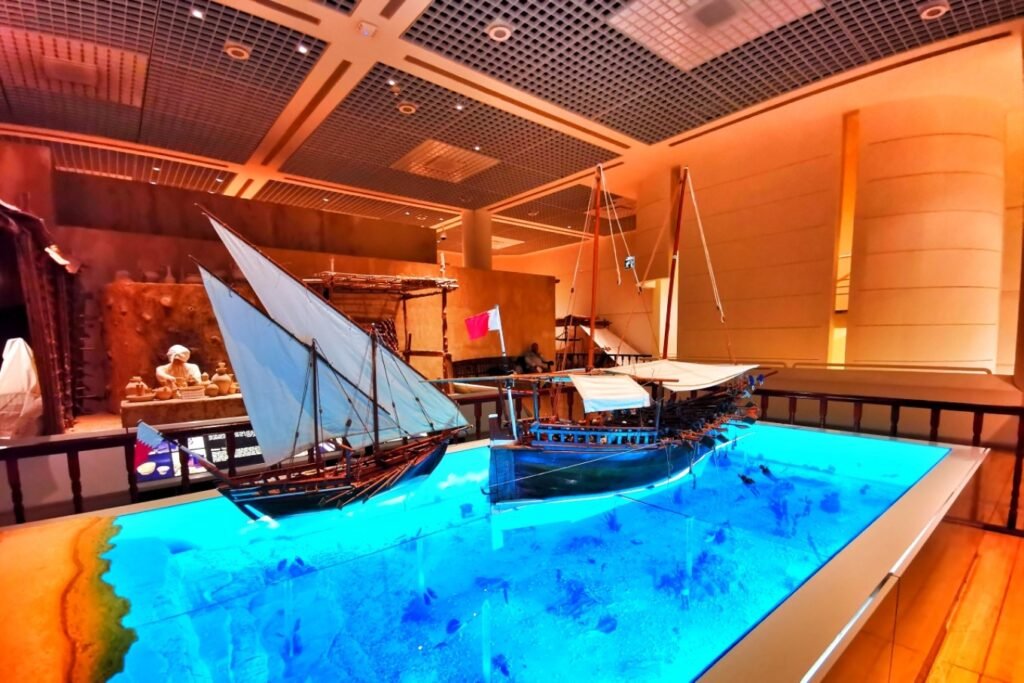

Although the museum’s architecture is not particularly grand or innovative, and its exhibits are not overly abundant, it effectively uses images, models, and sound effects to clearly present Bahrain’s historical development. It offers a concise overview of the nation’s story, making it an excellent place to quickly learn about the country. Interestingly, while most attractions in Bahrain are free, this museum charges an entrance fee of 1.5 dinars.


Bahrain’s Cultural Hub
Located alongside the National Museum and the National Theatre are the Cultural Hall and the Art Center. This entire area sits on reclaimed land, purposefully designated to house venues related to culture and the arts, showcasing Bahrain’s rich heritage. The seafront here also offers an excellent vantage point for admiring the skyline of Manama’s towering skyscrapers.
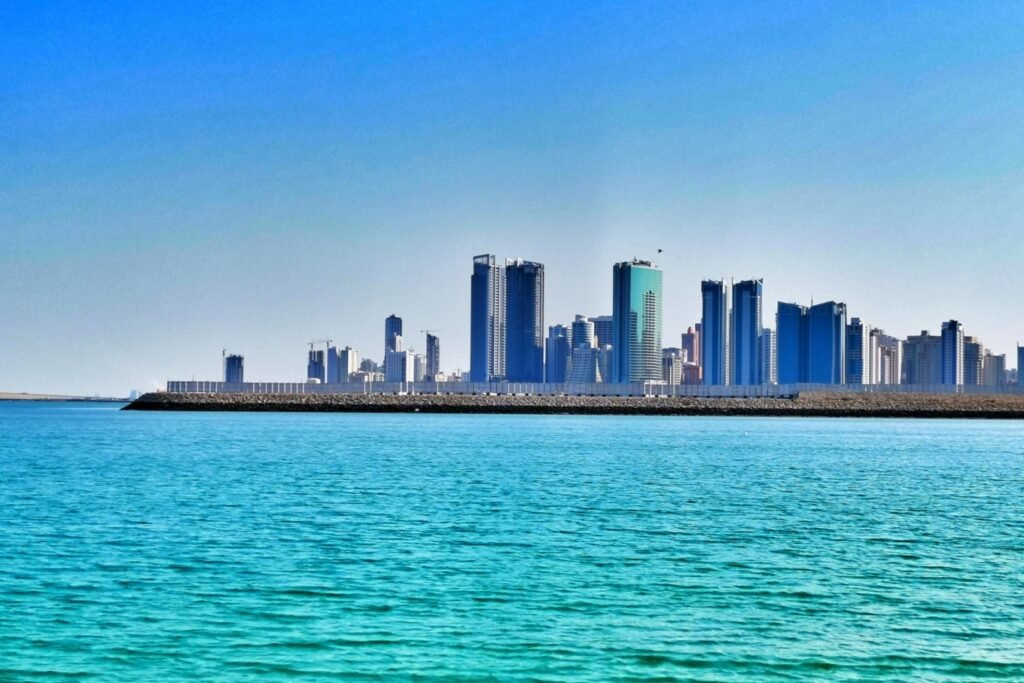

Bahrain World Trade Center – The World’s First Eco-Friendly Tower
The Bahrain World Trade Center is a twin-tower structure. Among the many skyscrapers in Manama, the two sail-shaped, interconnected towers of the World Trade Center stand out as a distinctive landmark. However, it is not just their appearance that draws attention. The most notable feature is the three wind turbines installed on the bridges connecting the towers, capable of generating 1.2 million kilowatt-hours of electricity annually. Part of the building’s energy supply comes from these turbines, making it the world’s first skyscraper to integrate wind power generation into its design.
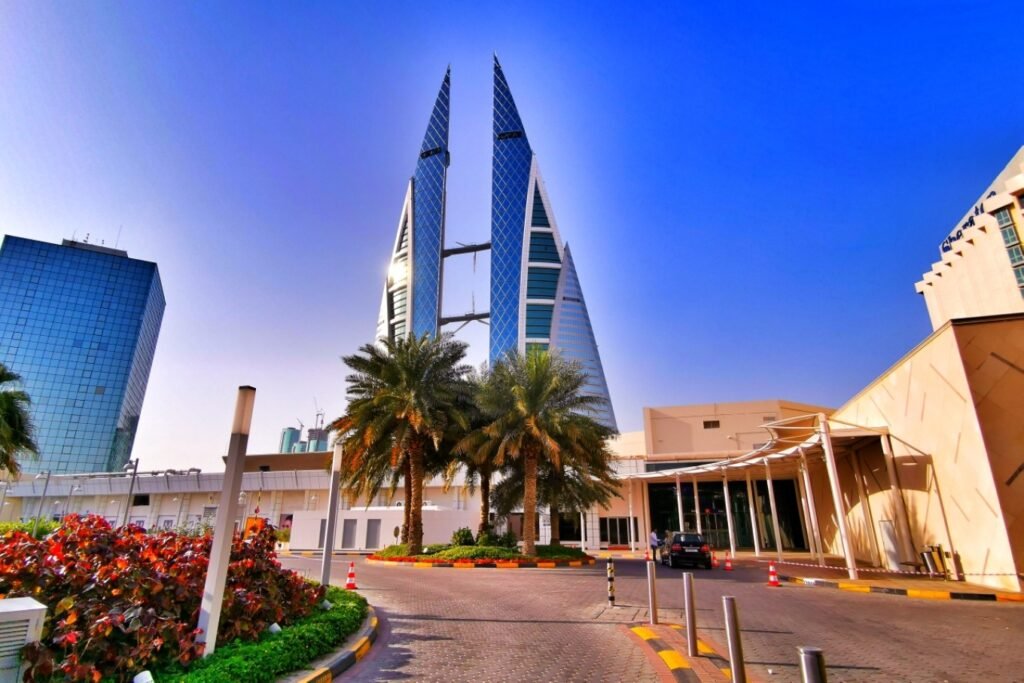

Bahrain Financial Harbour
The Bahrain Financial Harbour is located along the seafront in Manama on newly reclaimed land. At first glance, it still looks like a large construction site, but several high-rise buildings have already been completed, including the East and West Towers, currently the tallest buildings in Manama. Other notable structures include the Villamar Tower and the Harbour House.
The Financial Harbour houses key government departments, such as the Ministry of Social Development and the Ministry of Industry, Commerce, and Tourism, along with several diplomatic offices. Additionally, it hosts banks, post offices, hotels, and multinational corporations. This area plays a crucial role in managing the economic lifeline of Bahrain today.


The Gate of Bahrain Through Time
Bab Al Bahrain, also known as the Gate of Bahrain, serves as the entrance to the Manama Souq and is a symbol of the old city. It is not just a gate but an entire building with an arched passage leading into the market. Though not particularly old, it was built in 1949. In the past, it was located at a critical point, serving as a customs house at the port and marking the main gateway to the old city, earning it the name “Gate of Bahrain.”
However, with large-scale land reclamation projects, the sea that once lay beyond Bab Al Bahrain has long been replaced by reclaimed land, now home to the Bahrain Financial Harbour. What was once a gateway from the sea has transformed into an inland gate in the heart of modern Manama.
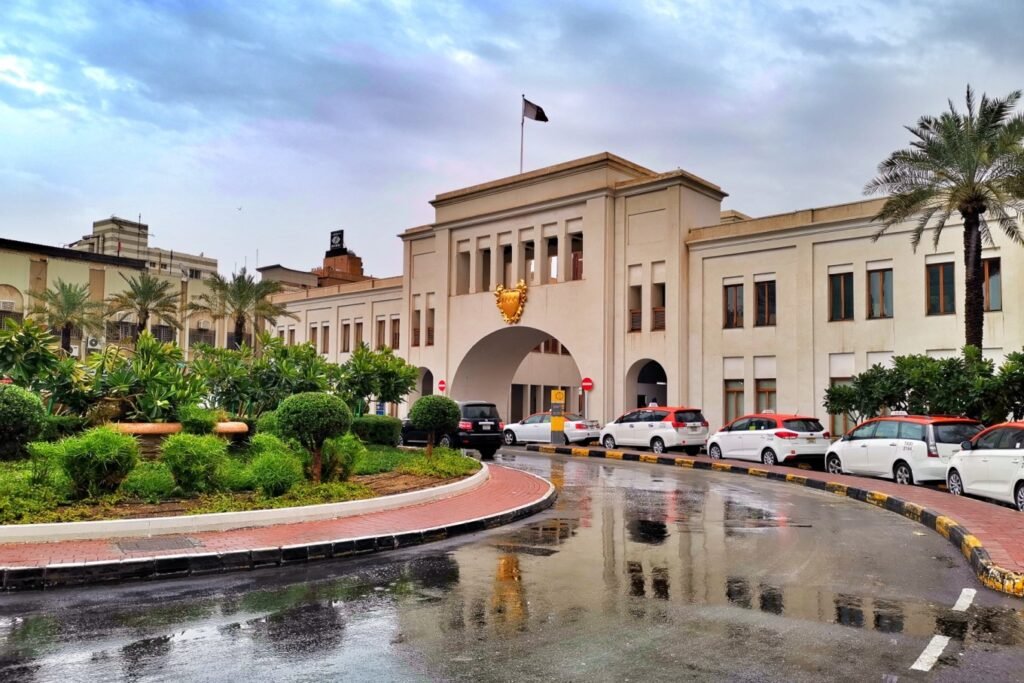
The Transformed Manama Souq
Beyond Bab Al Bahrain lies the bustling Manama Souq. While it remains the old marketplace in name, both the architecture and the contents have changed significantly. Neat storefronts now replace the narrow alleys and street vendors of the past. Although traditional Arab handicrafts can still be found among the wide array of goods, the market is now dominated by South Asian spices, fabrics, and clothing, giving it the feel of an Indian bazaar to the uninitiated.
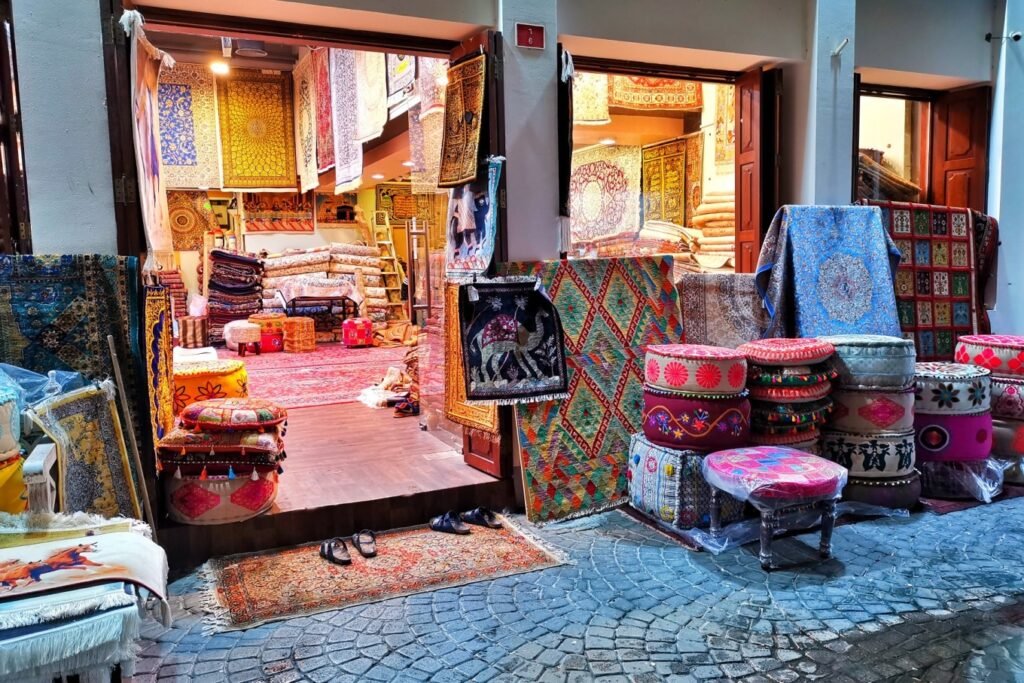
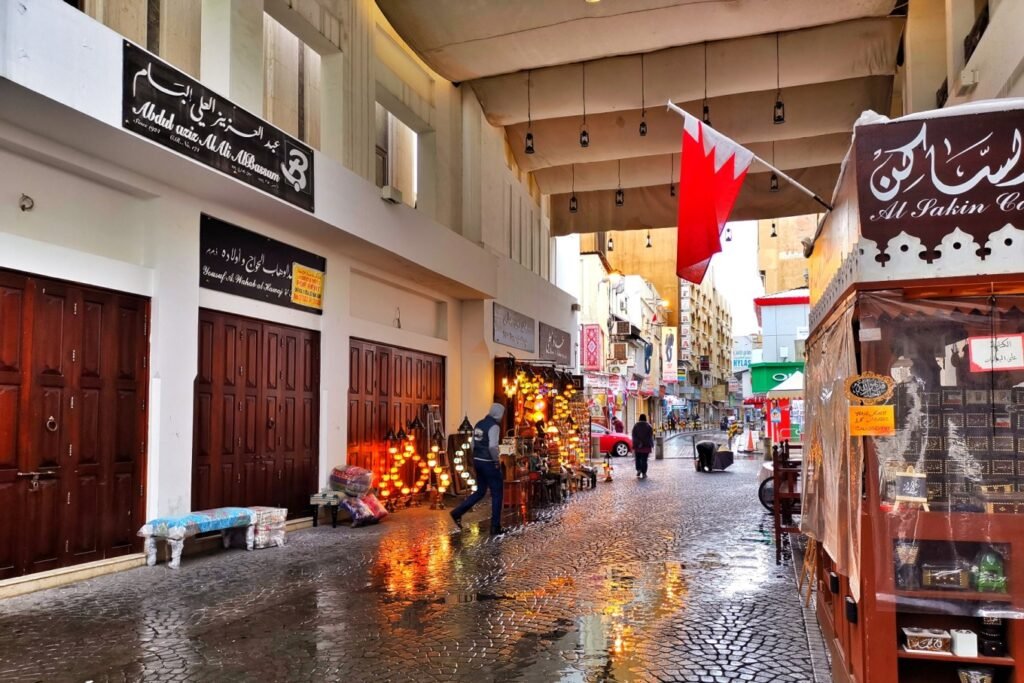
The Former Capital – Muharraq Island
Muharraq Island is Bahrain’s second-largest island and second-largest city. It was the country’s former capital, located right next to the current capital, Manama. Bahrain International Airport is also situated on this island. In a sense, Muharraq Island marks the starting point of Bahrain’s capital, as modern Manama gradually developed from here.
Most of Bahrain’s historic buildings are concentrated on Muharraq Island. As a result, there are few skyscrapers or wide streets; instead, the area features traditional Islamic-style low-rise houses and narrow alleys. However, the local population has largely moved out, and the island is now predominantly occupied by South Asians, especially Indians.

Pearling Heritage – The Former Gold
A key attraction on Muharraq Island is the Bahrain Pearling Path, a UNESCO World Heritage Site and a testament to Bahrain’s pearling heritage. The waters of the Persian Gulf surrounding Bahrain are crystal clear and coral-rich, making them ideal for producing high-quality pearl oysters.
Bahrain’s pearling history spans over two thousand years, and at one point, the island was the world’s center for the pearl trade. Before the rise of the oil economy, pearls were considered as valuable as gold, and the pearling industry was the backbone of Bahrain’s economy.
The Pearling Heritage site includes 17 preserved buildings, encompassing pearling areas, processing zones, old markets, as well as notable residences, art galleries, and historic streets, offering a glimpse into the island’s rich cultural and economic past.
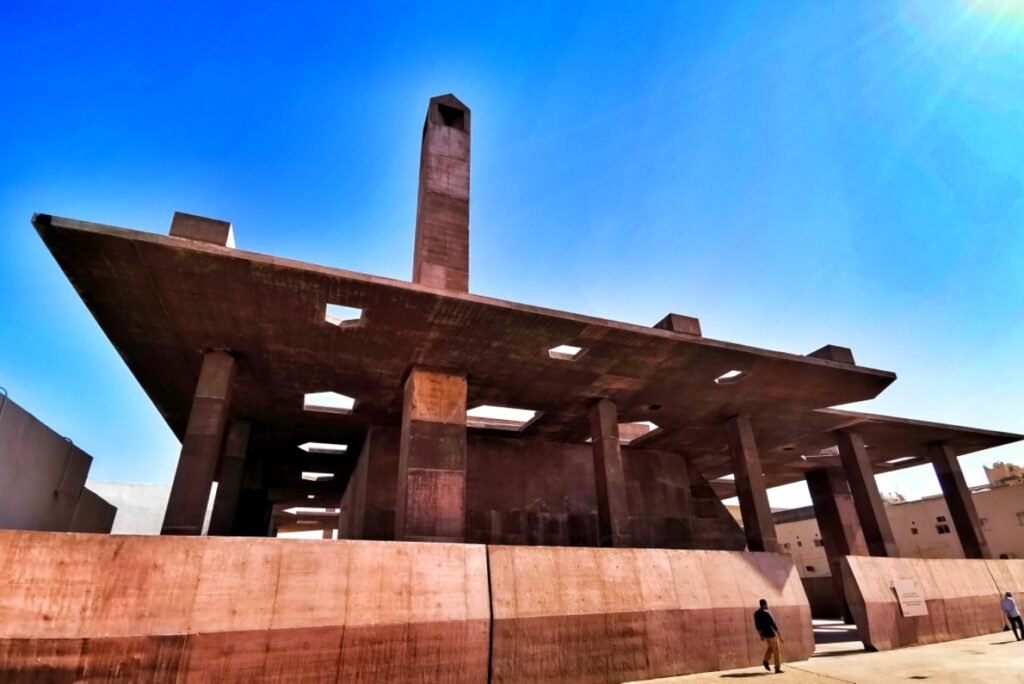

Arad Fort
Close to the old town of Muharraq Island, along the shore of Arad Bay, stands a small but significant fort—Arad Fort. Strategically located at the narrow entrance of the bay, the fort has long served as a crucial military stronghold for the island.
The original structure of the fort has been lost over time, and the current building is a reconstruction from the 19th century. Right next to the historic fort is the modern Seef Mall, a large commercial complex with shops, supermarkets, restaurants, food courts, cinemas, and arcades. The bustling mall offers a sharp contrast to the ancient simplicity of Arad Fort.
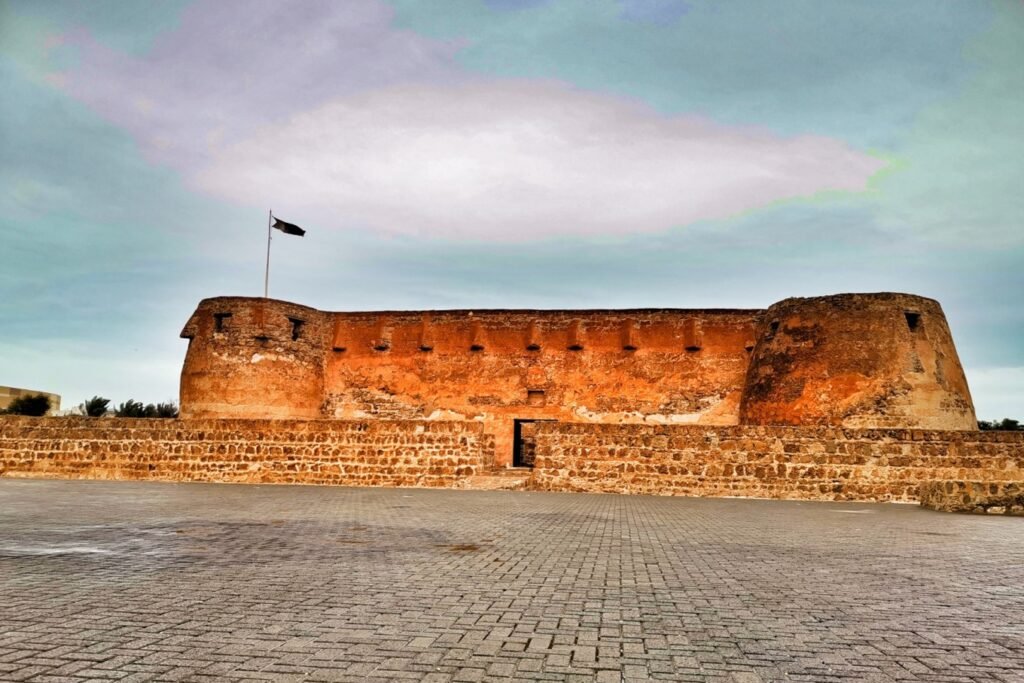

Bahrain Fort – A Treasure Trove of Bahraini Heritage
Bahrain Fort is located close to the city center of Manama, just past Karbabad Beach. Originally the site of an ancient Bahraini port, the military fortress was constructed during the Portuguese occupation. The fort is large, with well-preserved walls, moats, gates, battlements, watchtowers, underground chambers, and barracks, making it the most formidable stronghold on the island.
Archaeologists discovered that the fort was built atop layers of Greek, Roman, and even older ruins. The deeper the excavations went, the more ancient remains were uncovered. Eventually, they unearthed the ruins of a city dating back to 2300 BCE, which turned out to be much larger than the fort itself. The excavation revealed foundations of houses, temples, warehouses, public buildings, military structures, roads, and walls. However, the dig had to stop—any further excavation risked undermining the fort itself, and the UNESCO intervened to halt the work.
Archaeological evidence confirmed that this ancient city was once the capital of the Dilmun civilization, created by the ancient Sumerians. The site not only showcases the advanced construction skills of ancient builders but also reflects Bahrain’s historical development. Together with the fort, the ruins offer invaluable insight into the island’s past. Bahrain Fort has rightfully earned its place on the World Heritage List.
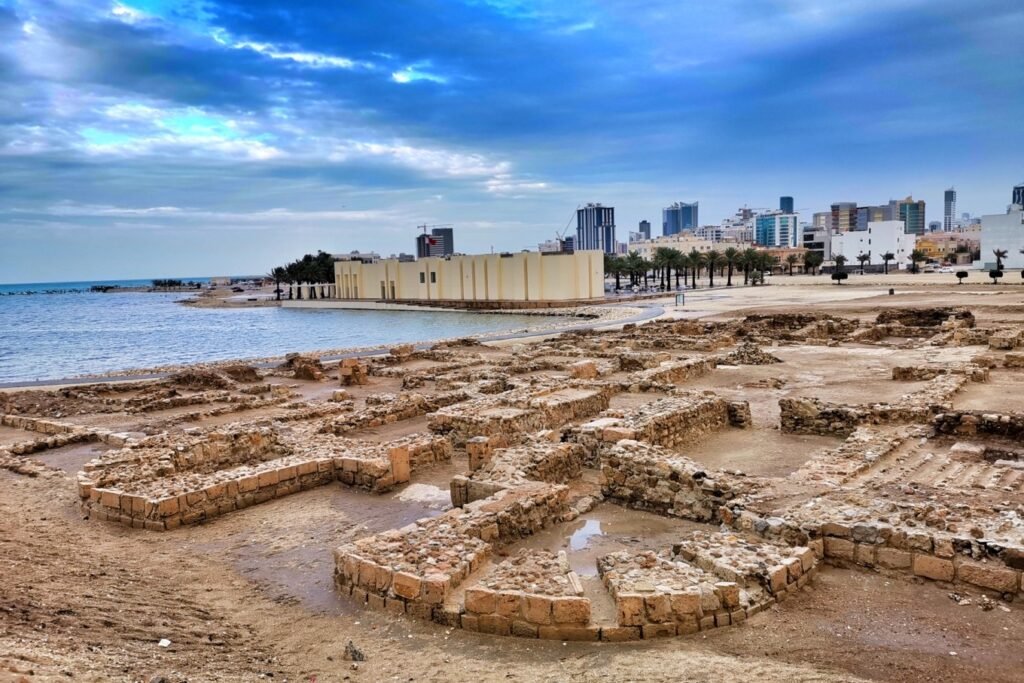
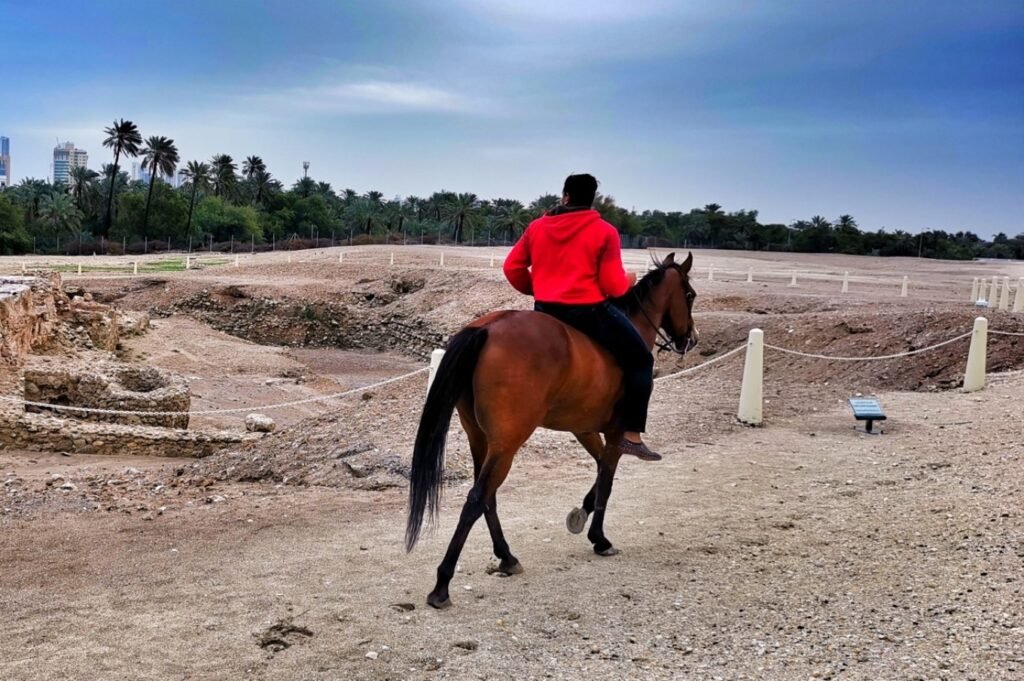
Riffa Fort and Military Museum
Located in the heart of Bahrain, Riffa is considered one of the country’s important cities and was the birthplace of the Bahraini royal dynasty. In the 19th century, a king was born and lived for many years in the Sheikh Salman bin Ahmed Al Fateh Fort, commonly known as Riffa Fort. The fort remains well-preserved, and its museum displays exhibits and photographs that recount this part of Bahrain’s history.
Not far from the fort lies the Military Museum, whose exhibits, both indoors and outdoors, reflect the island’s eventful military history. With its fortress-like design, the museum itself resembles a castle.
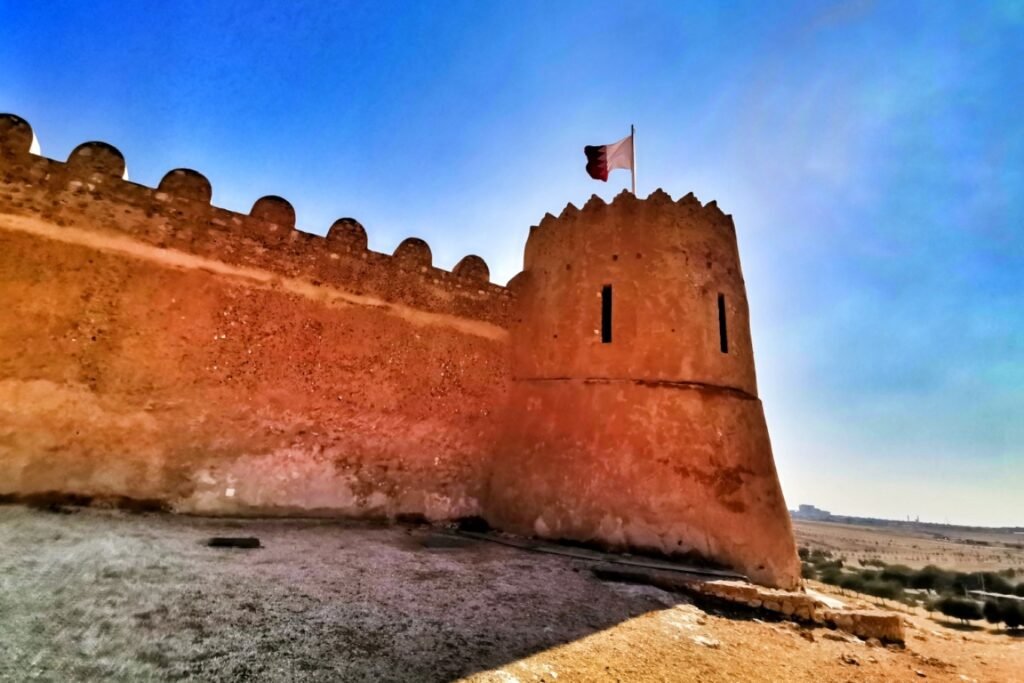
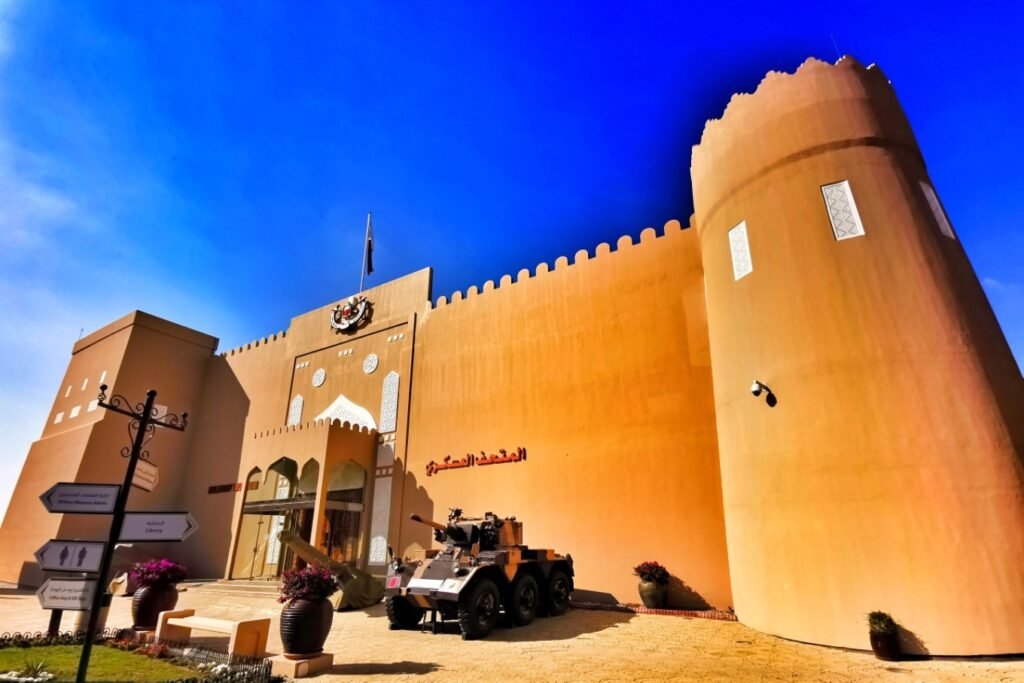
Bahrain’s Marvel: The Forest of Burial Mounds
Burial mounds are not unique, as they exist in many parts of the world. However, Bahrain is home to the largest and oldest prehistoric burial mound complex, earning it the title of the “Island of a Thousand Mounds.” The Aali Burial Mounds are among the most representative examples of these burial sites. Located in Bahrain’s Northern Governorate, this vast “sea of mounds” stretches for miles along the Sheikh Khalifa bin Salman Highway, which runs through the island.
These countless earthen mounds, densely packed and layered, resemble rolling ocean waves, surging one after another in an impressive display. When the British first excavated the site in 1879, they discovered that these graves were layered over time, with the earliest burials dating back to the Bronze Age, around 3000 BCE. Over centuries, more burials were added, forming mounds as high as ten meters.
It is said that ancient people considered this area a sacred burial ground, with many traveling great distances to be interred here. Estimates suggest that there are around 170,000 burial mounds across the island, though only about 70 have been excavated and studied. These excavations have revealed evidence of ancient settlements and numerous artifacts, further shedding light on Bahrain’s rich Dilmun civilization.


The Bridge Connecting the Island
The King Fahd Causeway connects Bahrain Island to mainland Saudi Arabia. Spanning 25 kilometers, it has four traffic lanes and sidewalks on both sides. Since much of the bridge is built over embankments, it is also referred to as a causeway. Funded by a Saudi company and constructed by Bahrain, the bridge symbolizes the end of Bahrain’s isolation as a maritime island and was named after the Saudi king.
The causeway is divided into four sections, passing through Umm an Nasan Island, a central island, and a small reclaimed island on the Saudi side. However, the surrounding area offers few scenic viewpoints. To see the bridge up close, we paid 25 dinars to drive onto it, stopping at the Bahrain-Saudi Causeway Park on the central island.


A World-Class Racing Circuit
The Bahrain International Circuit is the first racetrack in the Middle East and the world’s first circuit built in a desert climate. Designed by German experts, the complex consists of six tracks and can accommodate 50,000 spectators. It also features a nine-story VIP viewing tower, serving as an exclusive club for oil tycoons.
In 2004, Bahrain joined the F1 racing family alongside China, hosting its inaugural Grand Prix, which was won by the legendary Michael Schumacher. Today, the Bahrain International Circuit is regarded as one of the world’s premier racing venues, regularly hosting top-tier motorsport events.
Although we missed a major race during our visit, we were able to explore the circuit for free and watch some training sessions.
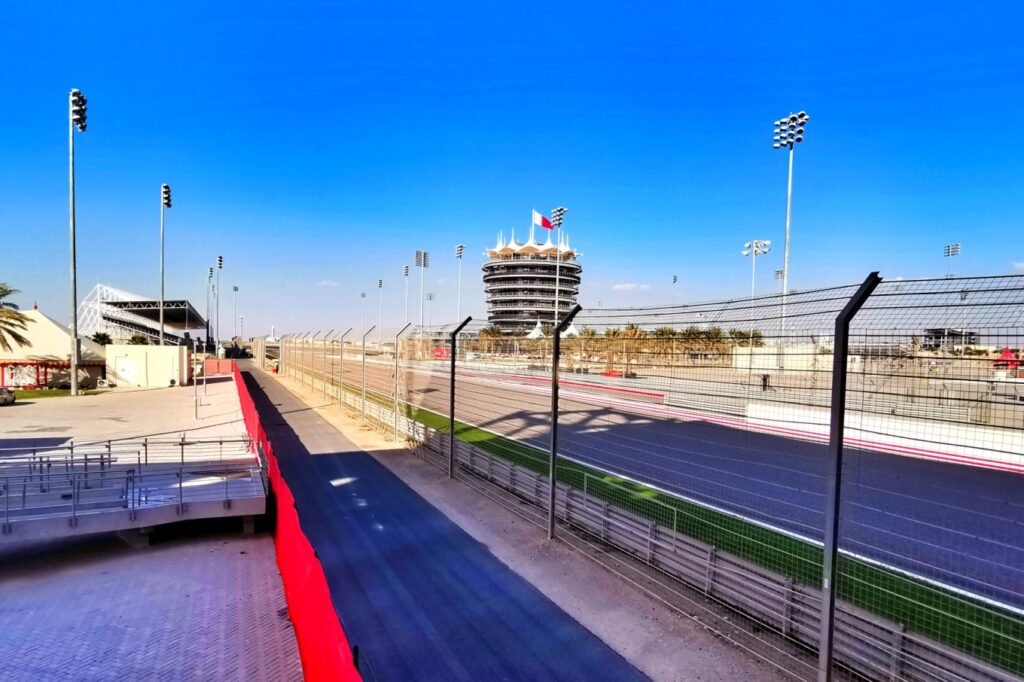

The First Oil Well – A Genesis Moment
Few people know that the first oil well in the Middle East was discovered on Bahrain Island. This historic well was drilled and operated during British rule and began producing crude oil in June 1932. Although the well has long since dried up, it marked the beginning of Bahrain’s journey toward prosperity and signaled the birth of the Persian Gulf’s wealthy oil states.
To commemorate this groundbreaking moment, the Bahrain Petroleum Company purchased the site, designating the now-dry well as a memorial and renaming it “Well No. 1.” A petroleum museum was also built nearby, preserving the legacy of this pivotal event in the region’s history.


The Tree of Life in Eden
Not far from the first oil well is the Tree of Life, a renowned attraction. Despite its modest size—standing just 10 meters tall—this mesquite tree has become a celebrated wonder. What makes it extraordinary is its location: a barren desert stretching for 10 kilometers in all directions, with no visible water sources or surrounding vegetation. Yet, this tree has thrived for 400 years, lush and full of life in the arid landscape.
Locals believe that without divine intervention, the tree could not have survived, and thus regard it as a miracle of nature. Many even believe that the site of the tree must be where the Garden of Eden once stood. It is no surprise that the Tree of Life is a popular destination, with many locals considering it a place of good fortune and coming here to enjoy its mystical atmosphere.





